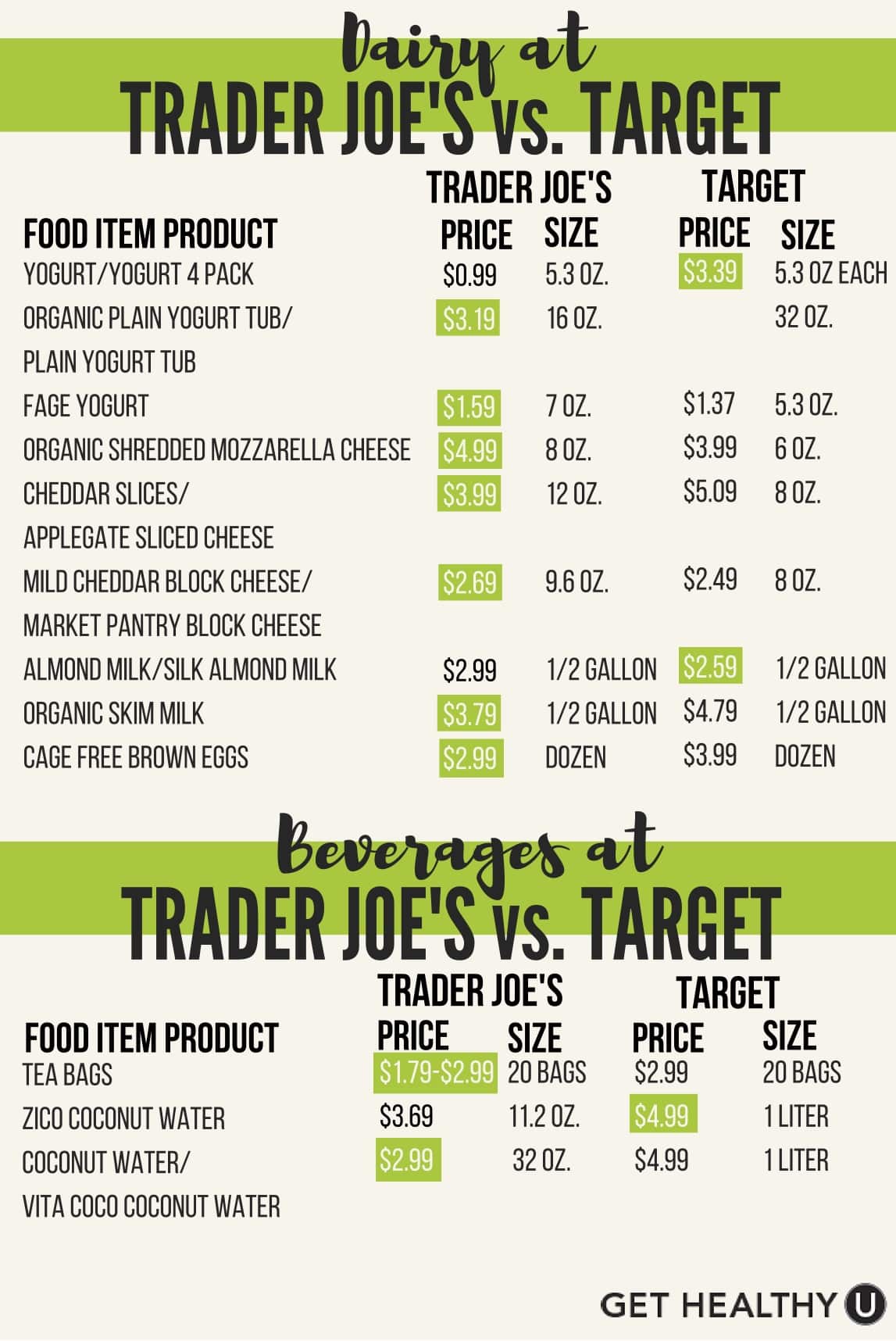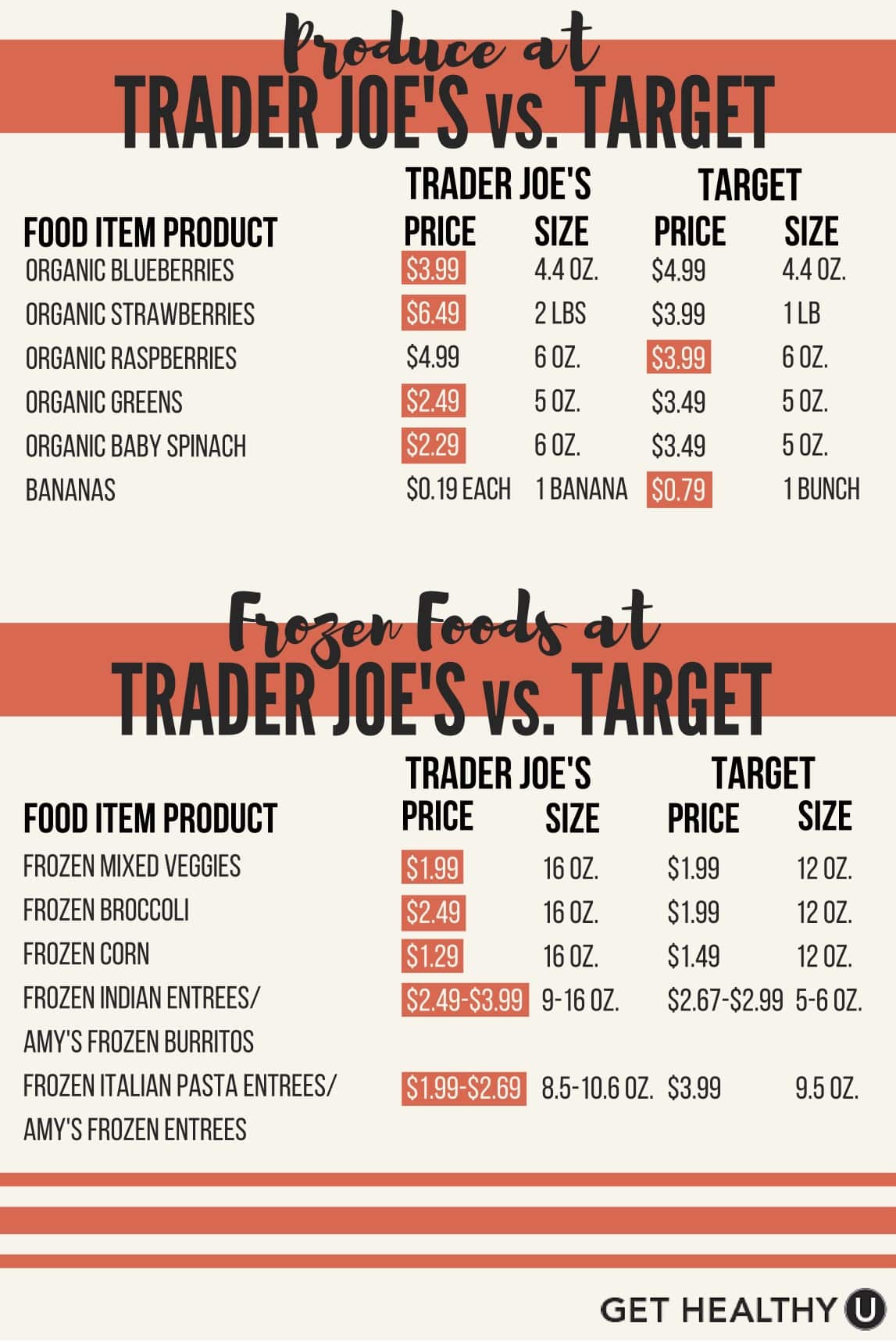Unpacking Trader Joe's Target Market: A Unique Grocery Niche
Table of Contents
- The Core Demographic: Who Shops at Trader Joe's?
- The "Treasure Hunt" Experience: Cultivating Loyalty
- Product Innovation: The Heart of Trader Joe's Appeal
- Value Proposition: Quality Meets Affordability
- Community and Culture: Beyond Just Groceries
- Geographic and Lifestyle Considerations
- Digital Engagement and Word-of-Mouth Marketing
- The Evolving Trader Joe's Target Market
The Core Demographic: Who Shops at Trader Joe's?
At its heart, **Trader Joe's target market** primarily consists of educated, health-conscious, and often urban or suburban consumers who are looking for more than just a place to buy groceries. This demographic typically falls within the middle to upper-middle income brackets, valuing unique food experiences and a sense of discovery. They are often early adopters of food trends, appreciate organic and natural products, and are willing to pay a slight premium for items they perceive as high quality or innovative. This isn't about being kingmaker or wotr, but rather about understanding the specific desires of a distinct consumer group.The Educated and Curious Consumer
A significant portion of Trader Joe's customers are college-educated individuals who are curious about new flavors and global cuisines. They enjoy experimenting in the kitchen and are open to trying new ingredients or pre-made meals that simplify their busy lives without compromising on taste or quality. They are often well-read and informed about food origins, sustainability, and dietary trends.Health-Conscious and Environmentally Aware
Trader Joe's appeals strongly to those who prioritize healthy eating and are mindful of their environmental footprint. The store's emphasis on natural, organic, and minimally processed foods, along with its commitment to reducing artificial ingredients, aligns perfectly with this segment's values. They appreciate the transparency in labeling and the availability of options catering to various dietary needs, such as gluten-free, vegan, or vegetarian.The "Treasure Hunt" Experience: Cultivating Loyalty
One of the most distinguishing features of Trader Joe's is its "treasure hunt" shopping experience. This isn't just a marketing gimmick; it's a fundamental aspect of how they engage with their **Trader Joe's target market**. The limited, rotating inventory, coupled with quirky product names and hand-drawn signs, creates an atmosphere of discovery. Customers often describe their trips to Trader Joe's as an adventure, where they might stumble upon a new favorite snack or a seasonal delicacy that won't be there next week. This approach taps into a psychological desire for novelty and surprise. It's akin to the advice given when looking for a rare item: "One tip I advise when looking for the trader is to search in concentric circles from spawn. He has multiple possible locations where you can find him and once you do, he is..." This sense of active searching and eventual discovery builds a deeper connection than simply picking up necessities. It fosters a sense of community and shared excitement, where customers eagerly discuss their latest finds and recommendations.Product Innovation: The Heart of Trader Joe's Appeal
Trader Joe's success is inextricably linked to its relentless focus on unique, high-quality, and often private-label products. This is where their "rogue trader" mentality truly shines. Instead of stocking thousands of national brands, they curate a highly selective assortment of items, many of which are exclusive to their stores. This strategy allows them to control quality, pricing, and the overall brand narrative.The Power of Private Label
The vast majority of products at Trader Joe's are sold under their own brand names, such as "Trader Joe's," "Trader Ming's," "Trader José's," or "Trader Giotto's." This private-label strategy is a cornerstone of their business model. It allows them to bypass intermediaries, work directly with suppliers, and offer distinctive products at competitive prices. This focus on unique items ensures that customers can't simply find these products elsewhere, reinforcing the need to visit Trader Joe's specifically. The importance of specific product identification is clear, as seen in the emphasis on "When posting an image of a product, please include the exact Trader Joe's item name(s) in the title, Choosing descriptive post titles with exact product names mentioned yields for better." This highlights the brand's product-centric approach and how customers interact with it.Seasonal and Limited-Time Offerings
A key driver of repeat visits and customer excitement is Trader Joe's ever-changing array of seasonal and limited-time products. From pumpkin spice everything in the fall to peppermint treats during the holidays, these items create a sense of urgency and exclusivity. Customers often eagerly anticipate these seasonal releases, discussing them online and stocking up before they disappear. This constant refresh keeps the shopping experience dynamic and prevents stagnation, much like a guide that is "still being updated and worked on" with new versions constantly becoming available. This continuous evolution is a core part of their appeal to the **Trader Joe's target market**.Value Proposition: Quality Meets Affordability
While Trader Joe's isn't a discount grocer, its **Trader Joe's target market** perceives it as offering excellent value. This isn't just about low prices; it's about the perceived quality-to-price ratio of their unique products. They offer gourmet, organic, and specialty items at prices that are often more accessible than those found at high-end health food stores. This "affordable luxury" positioning resonates strongly with consumers who want quality and unique experiences without breaking the bank. Their streamlined operations, lack of extensive advertising (relying heavily on word-of-mouth), and efficient supply chain contribute to their ability to offer competitive pricing. They strategically choose to "do project b because it gives more profit factor or has lower requirements," which translates into sourcing unique products efficiently and passing some of those savings onto the customer, fostering loyalty and perceived value.Community and Culture: Beyond Just Groceries
Trader Joe's has successfully cultivated a strong sense of community and a distinct corporate culture that extends to its customer base. The friendly, knowledgeable staff (often referred to as "crew members") are a significant part of the shopping experience. They are encouraged to be helpful, enthusiastic, and to engage with customers, creating a welcoming and personalized atmosphere. This human element is crucial. It’s not just about transactions; it’s about interaction. Questions like "What's your favorite product you've tried from Trader Joe's or out of all of our holiday items, what's one you would keep year round?" are not just casual inquiries but a reflection of the brand's desire to engage with its customers on a personal level, fostering a sense of belonging and shared enthusiasm. This informal community building, much like "doing the quests for the trader guard captains increased the number for player rep of traders," builds a strong, almost tribal loyalty among their clientele.Geographic and Lifestyle Considerations
The geographic placement of Trader Joe's stores often reflects its target market. They tend to open locations in urban and affluent suburban areas, often near universities or in neighborhoods with a high concentration of young professionals and families. These areas typically have a higher density of the educated, health-conscious demographic that forms their core customer base. From a lifestyle perspective, Trader Joe's appeals to busy individuals and families who appreciate convenience without sacrificing quality. Their range of ready-to-eat meals, frozen appetizers, and quick-prep ingredients caters to those with demanding schedules who still want to eat well. This strategic alignment with their customers' lifestyles is a key component of their success.Digital Engagement and Word-of-Mouth Marketing
Despite a minimal traditional advertising budget, Trader Joe's thrives on word-of-mouth marketing and organic digital engagement. Social media platforms are flooded with user-generated content featuring Trader Joe's hauls, recipe ideas, and product reviews. Dedicated fan accounts, blogs, and forums serve as unofficial communities where enthusiasts share tips, favorite products, and store experiences. This organic buzz is incredibly powerful and cost-effective. It demonstrates the deep connection customers feel with the brand, turning them into enthusiastic advocates. When customers are actively discussing "their favorite product" or sharing images with "exact Trader Joe's item names," they are doing the marketing for the brand. This echoes the sentiment that a strong "player rep of traders" is built through engagement and shared experiences. Trader Joe's understands that its products are its best advertisement, and the passionate customer base amplifies this message exponentially.The Evolving Trader Joe's Target Market
While the core **Trader Joe's target market** remains consistent, the company continually adapts to evolving consumer preferences and dietary trends. They are adept at introducing new products that cater to emerging needs, whether it's plant-based alternatives, international flavors, or convenience-focused solutions. This continuous innovation ensures they remain relevant and appealing to their existing customer base while also attracting new segments. Their strategy is akin to a skilled "Arch Militant melee," where they alternate between "force special attack" (unique, trending products) and "regular attack" (reliable staples) to maintain their competitive edge. They don't just stick to what works; they constantly refine and expand their offerings, ensuring their "guide" (product catalog and brand experience) is always "updated and worked on," with new "versions" available regularly. This dynamic approach ensures that Trader Joe's continues to be a destination for those seeking a distinct and enjoyable grocery shopping experience. As the market evolves, so too does Trader Joe's, proving that their "rogue trader" spirit is a sustainable and highly effective business model.Conclusion
Trader Joe's has masterfully defined and catered to its specific **Trader Joe's target market** by offering a unique blend of quality, value, and an engaging shopping experience. Their strategy of focusing on private-label products, fostering a "treasure hunt" atmosphere, and building a strong community around their brand has created a fiercely loyal customer base that actively seeks out their stores. They operate with an independent spirit, much like a "god blessed rogue trader," making choices that prioritize their unique vision and customer connection over conventional retail norms. This deep understanding of their audience, combined with continuous product innovation and a strong brand identity, ensures their continued success in a highly competitive industry. If you've ever wondered about the magic behind Trader Joe's, it lies squarely in their ability to connect with a specific demographic that values discovery, quality, and a shopping experience that feels personal and exciting. What's your favorite Trader Joe's product? Share your thoughts and discoveries in the comments below, and let's continue to explore the unique world of this beloved grocer!
Trader Joe's vs. Target: A Price Comparison (Is Trader Joe's Expensive?)

Trader Joe's vs. Target: A Price Comparison (Is Trader Joe's Expensive?)

Trader Joe's vs. Target: A Price Comparison (Is Trader Joe's Expensive?)